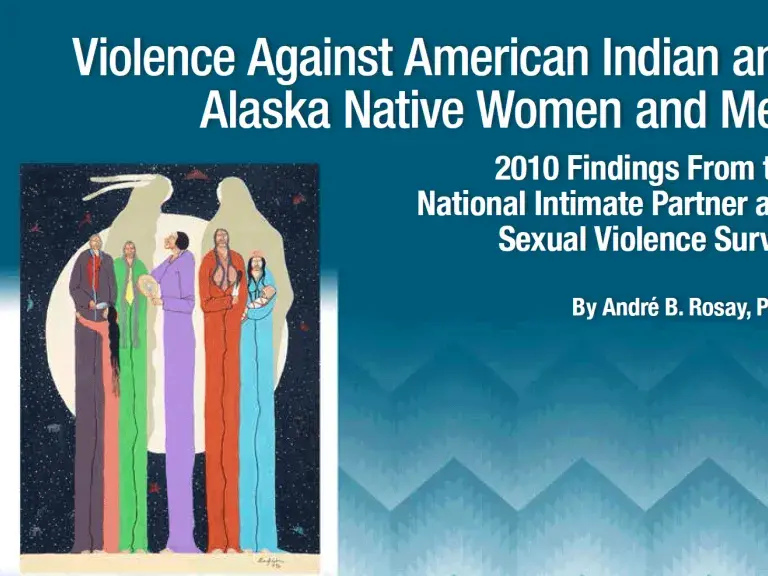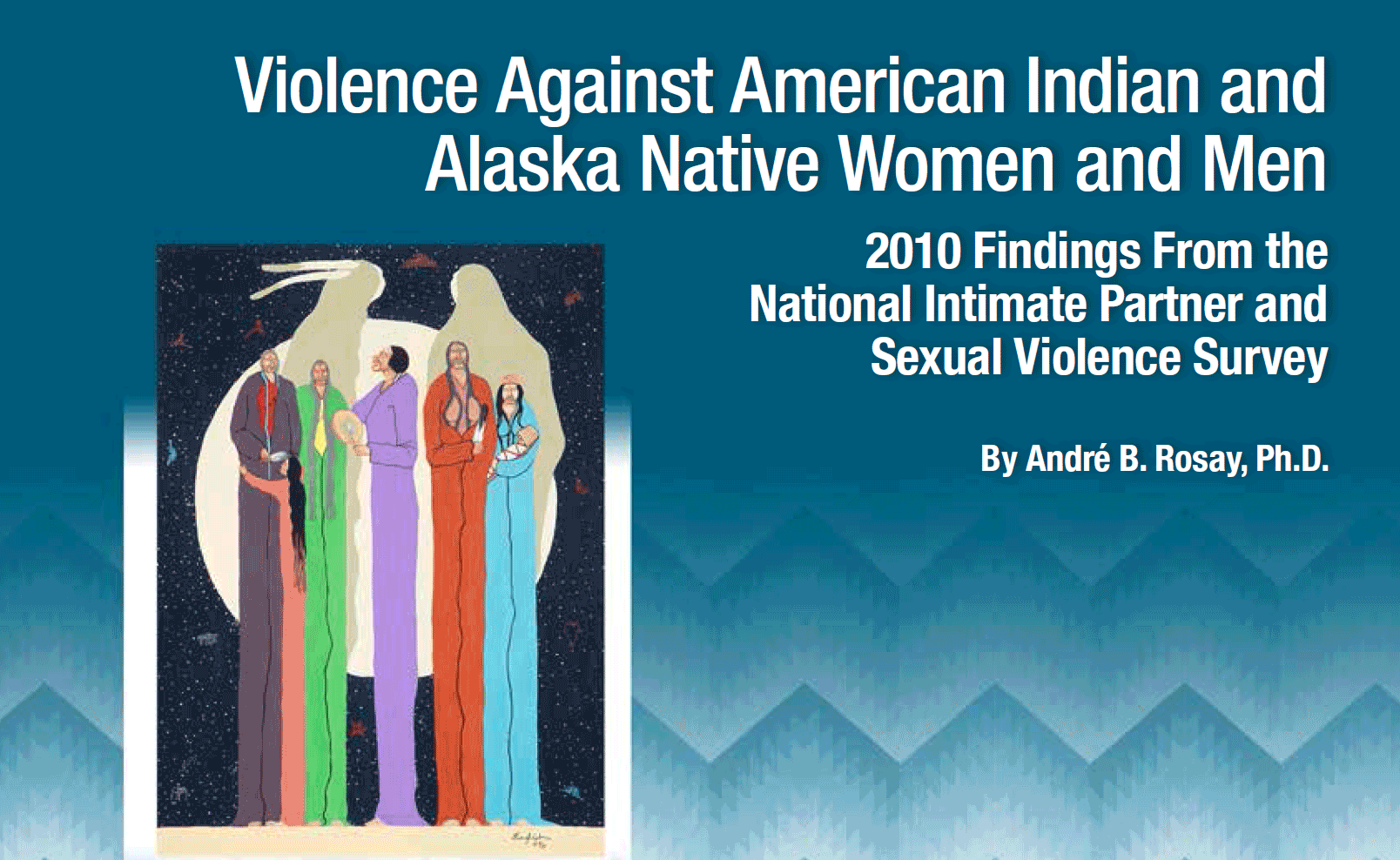
 June 14, 2016| Washington, D.C. — More than 4 in 5 American Indian and Alaska Native women have experienced violence in their lifetime and more than 1 in 2 American Indian and Alaska Native women have experienced sexual violence according to the National Institute of Justice’s new report. On June 16th, the National Congress of American Indians, the National Indigenous Women’s Resource Center, and the Indian Law Resource Center are co-sponsoring a Congressional Briefing, to share information about the findings in The Violence Against American Indian and Alaska Native Women and Men: 2010 Findings from the National Intimate Partner and Sexual Violence Survey[1]. The briefing, in cooperation with Sen. Lisa Murkowski (R-AK) and Rep. Louise M. Slaughter (D-NY), will take place from 1:30-3:00 p.m., in the Capitol Visitor’s Center (Room SVC 203-02).
June 14, 2016| Washington, D.C. — More than 4 in 5 American Indian and Alaska Native women have experienced violence in their lifetime and more than 1 in 2 American Indian and Alaska Native women have experienced sexual violence according to the National Institute of Justice’s new report. On June 16th, the National Congress of American Indians, the National Indigenous Women’s Resource Center, and the Indian Law Resource Center are co-sponsoring a Congressional Briefing, to share information about the findings in The Violence Against American Indian and Alaska Native Women and Men: 2010 Findings from the National Intimate Partner and Sexual Violence Survey[1]. The briefing, in cooperation with Sen. Lisa Murkowski (R-AK) and Rep. Louise M. Slaughter (D-NY), will take place from 1:30-3:00 p.m., in the Capitol Visitor’s Center (Room SVC 203-02).
The report finds more than 1 in 2 American Indian and Alaska Native women have experienced intimate partner violence and among those women, 90% experienced this violence at the hands of an interracial intimate partner. The report states that “Among the American Indian and Alaska Native women who have experienced sexual violence in their lifetime, almost all (96 percent) have experienced sexual violence by an interracial perpetrator.”
“The report confirms what we see at the grassroots level every day,” said Lucy Simpson, Executive Director of the National Indigenous Women’s Resource Center. “Native women suffer terribly disproportionate rates of violence, and it is usually non-Native men who are committing these crimes,” We need to make sure that our tribal governments have all the tools they need to respond to this epidemic of violence.”
The report examines the prevalence of violence against American Indian and Alaska Native women and men based on a large national sample and estimates the incidence of sexual violence, physical violence by intimate partners, stalking, and psychological aggression by intimate partners. The report also provides estimates of interracial and intraracial victimization of American Indian and Alaska Natives and examines the impact of violence on the victims. The program will include a presentation by the author of the report, Dr. André B. Rosay, and a discussion that will focus on further measures to intensify and strengthen the response to violence against American Indian women, and particularly Alaska Native women.
Congress passed VAWA 2013 in response to a clear need for major improvements in how the United States responds to violence against American Indian and Alaska Native women, especially violence committed by non-Natives. The report confirms that nearly all violence against Native women who participated in the study was committed by non-Native perpetrators.
"VAWA 2013 was an important step forward, but VAWA jurisdiction is limited to certain crimes, it does not protect victims of stranger rape, and it does not protect children or other family members," noted Terri Henry, Co-Chair of the NCAI Task Force on Violence Against Women and Chair of the Indian Law Resource Center's Board of Directors. "The law needs to be expanded to protect additional victims and all tribes should be provided with the proper resources to implement the law.”
The 2013 Violence Against Women Reauthorization Act affirmed tribes' ability to exercise special domestic violence criminal jurisdiction (SDVCJ) over non-Indian defendants within Indian country for domestic or dating violence against Native women, and violations of protection orders. As of January 1, 2016, eight tribes have implemented this criminal jurisdiction over non-Indians under VAWA 2013, collectively making 44 SDVCJ arrests, resulting in 18 guilty pleas, 5 referrals for federal prosecution, 1 acquittal by jury, 12 dismissals, with 6 cases pending.
[1] Rosay, André, PhD, U.S. Dept. of Justice, National Institute of Justice Research Report: Violence Against Indian and Alaska Native Women and Men 2010 Findings from the National Intimate Partner and Sexual Violence Survey, (May 2016), available at: https://www.ncjrs.gov/pdffiles1/nij/249736.pdf.
